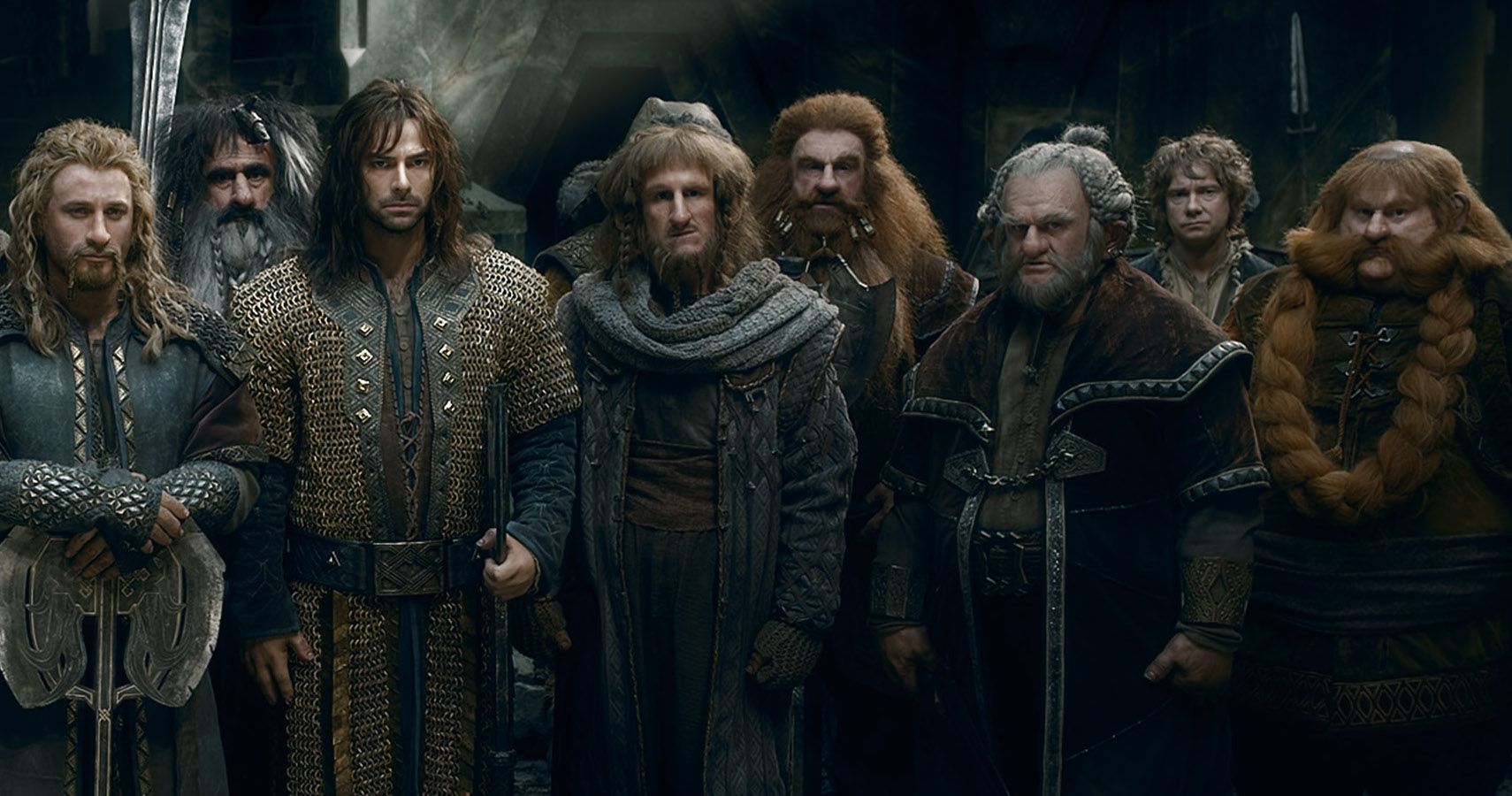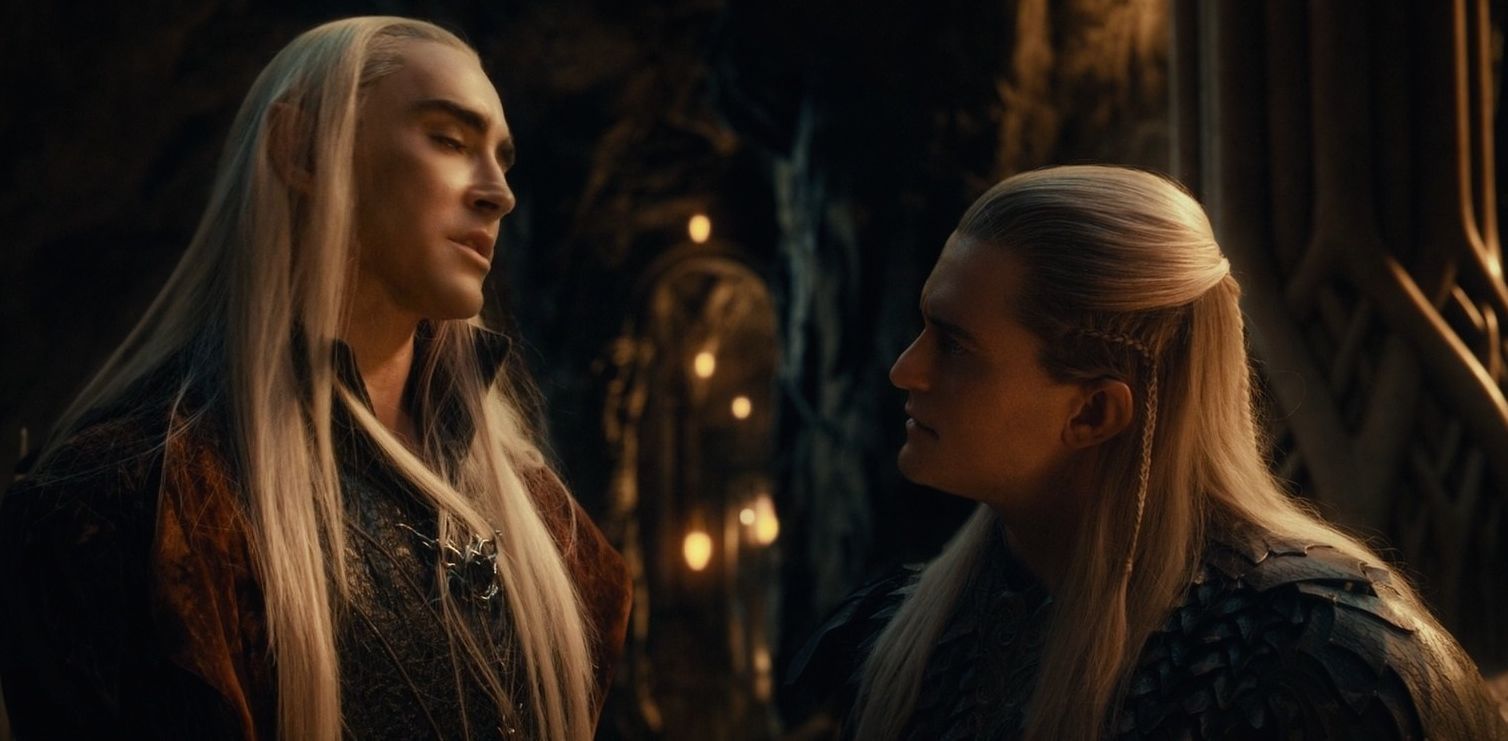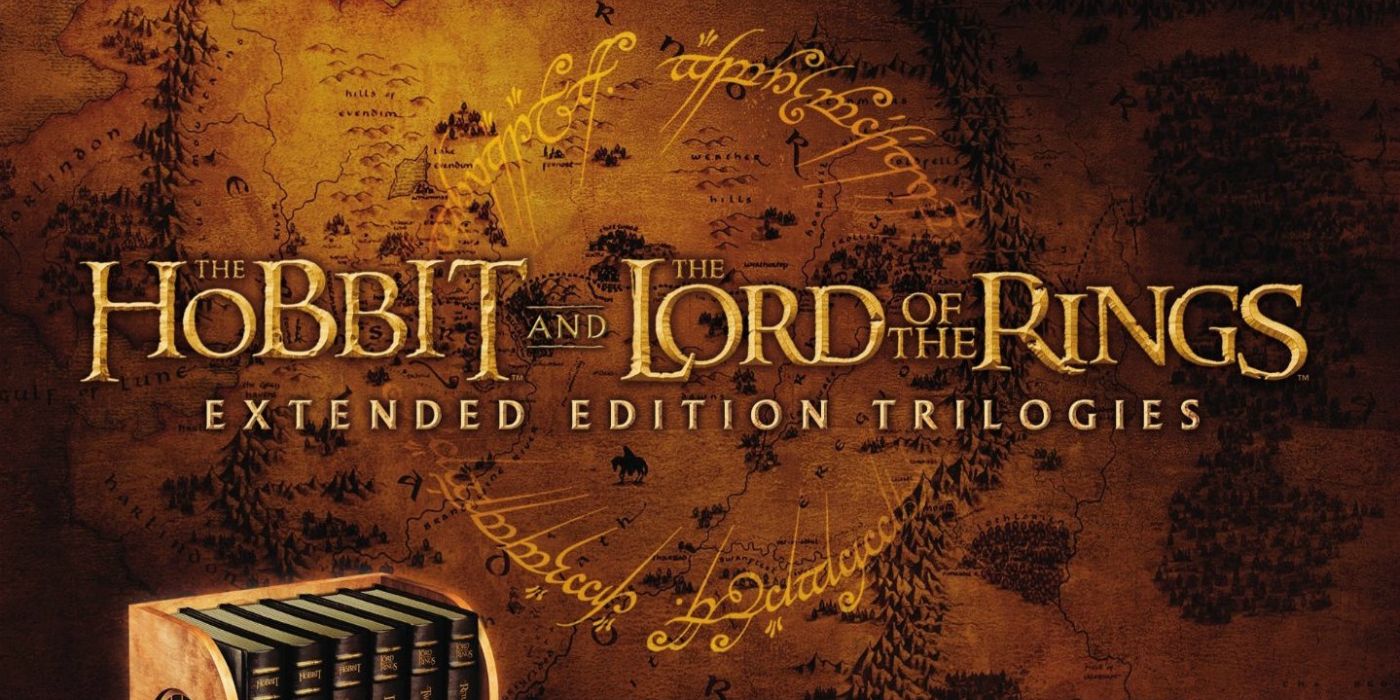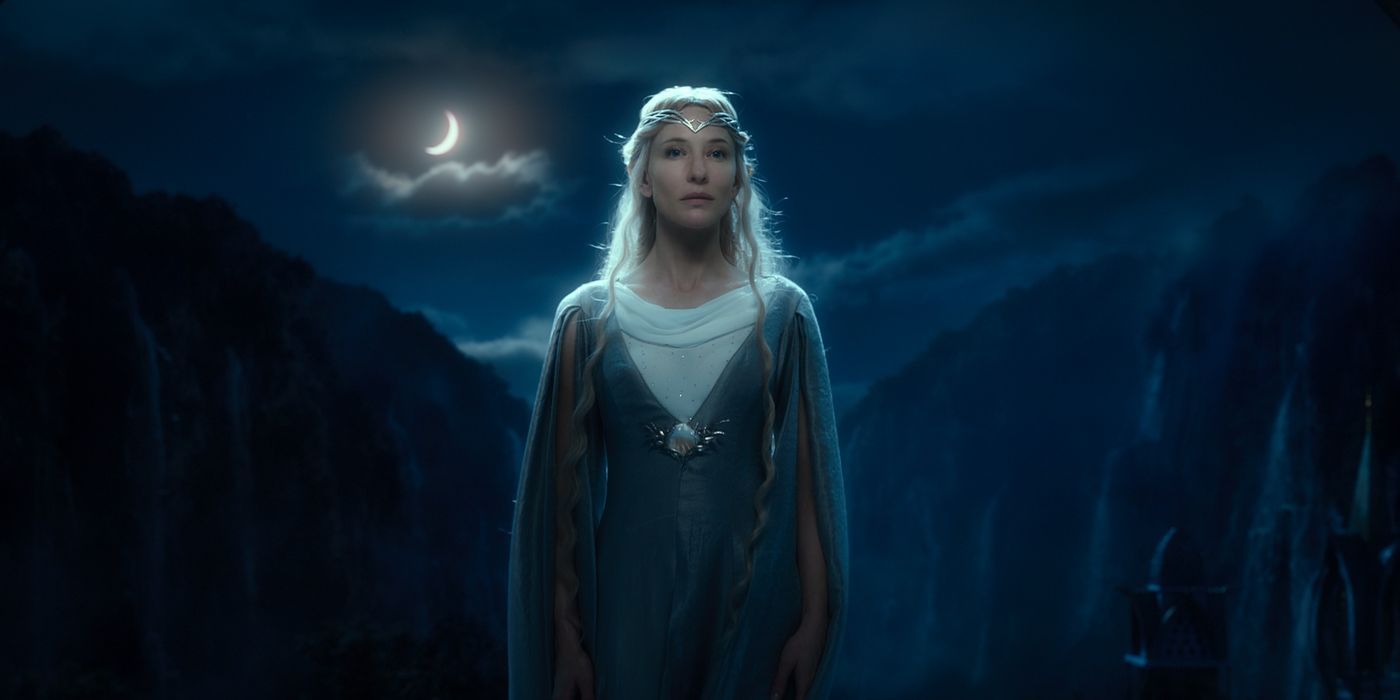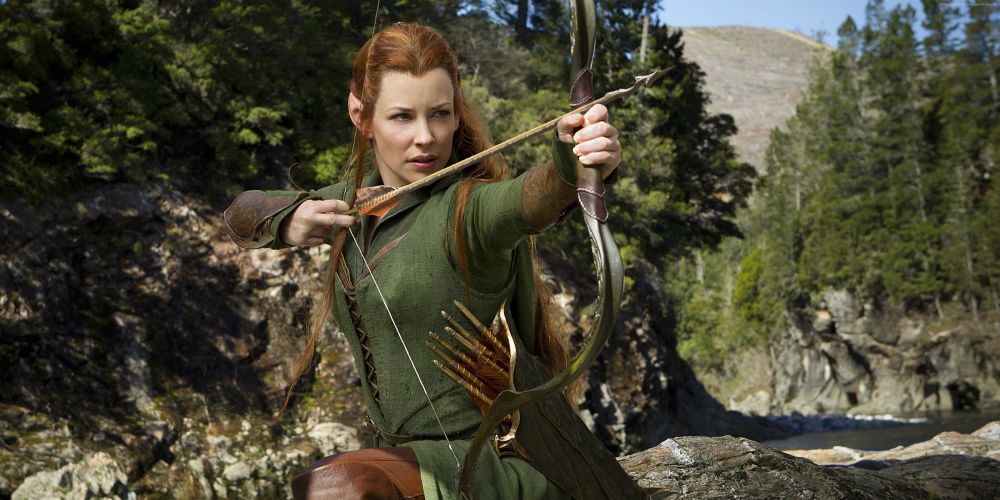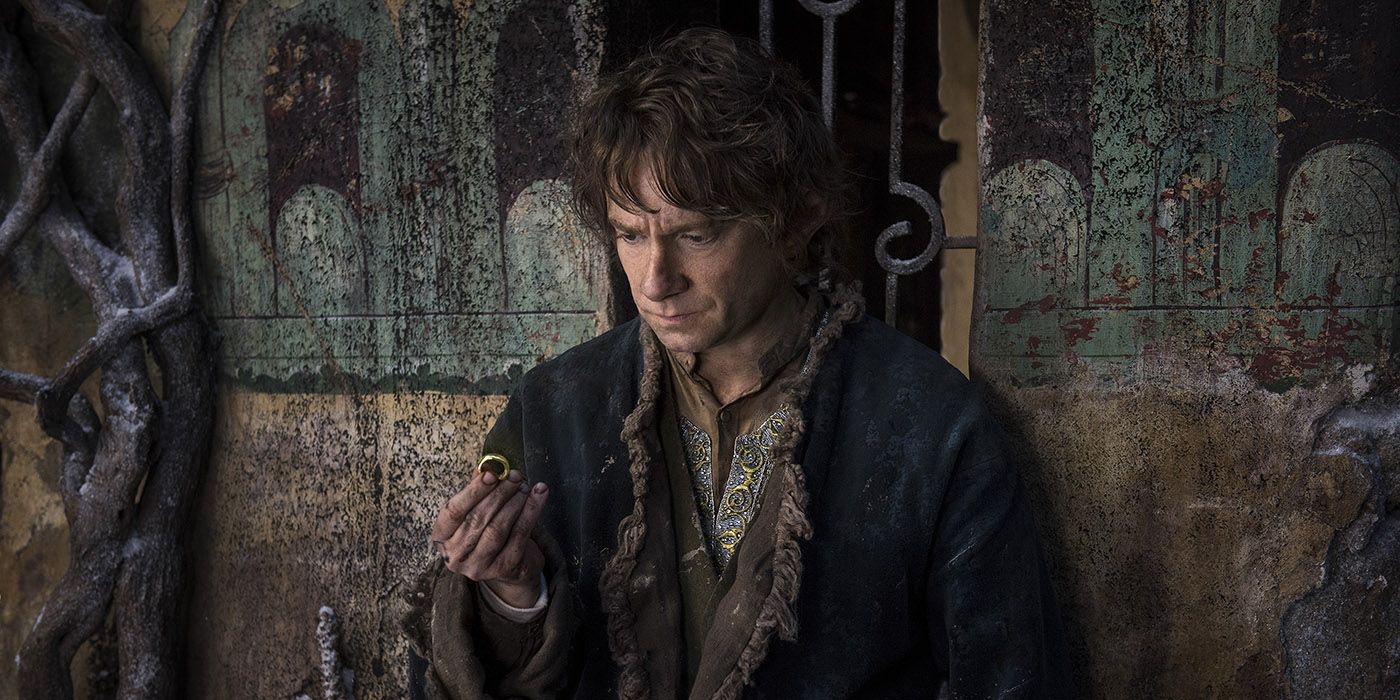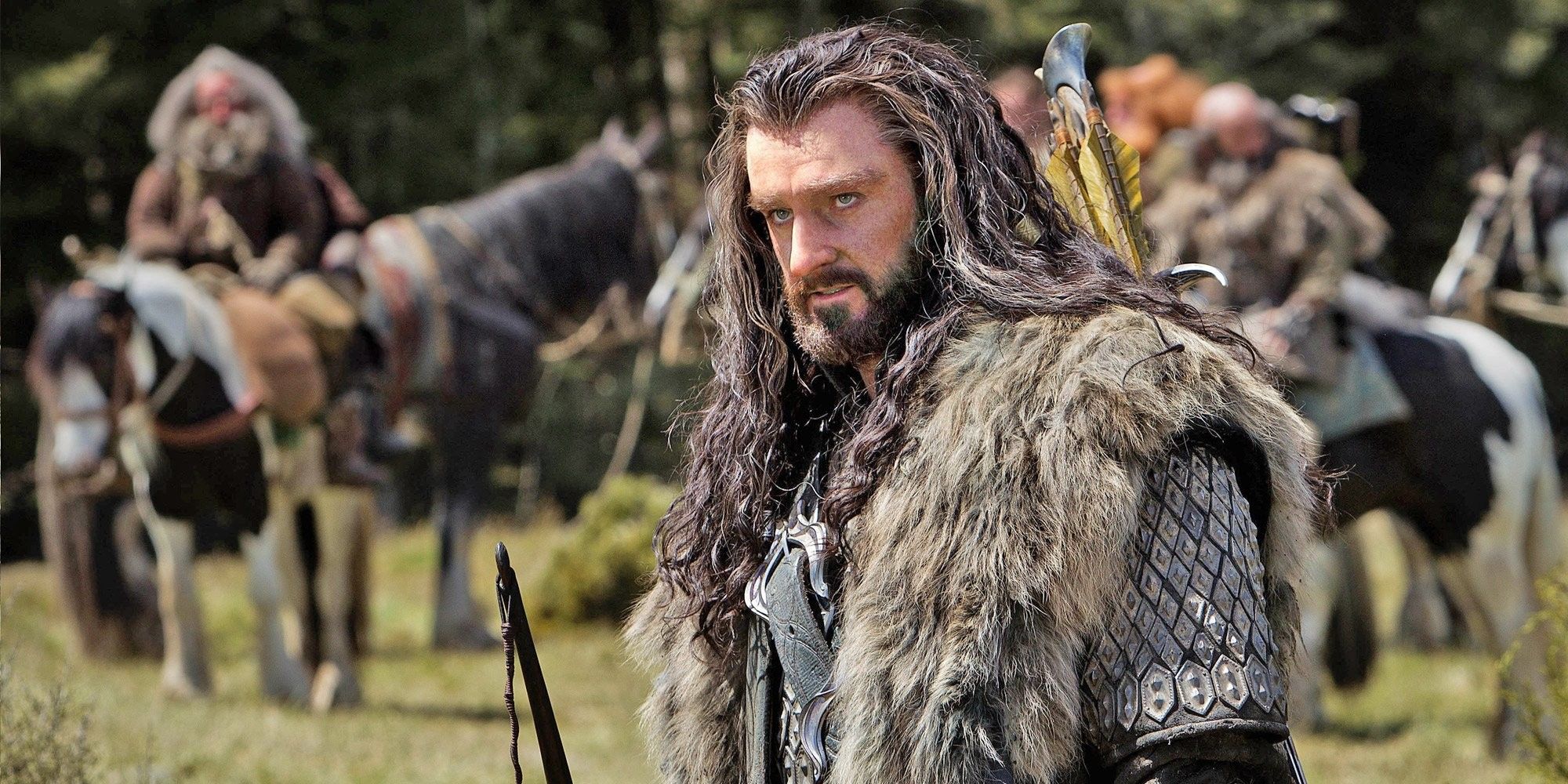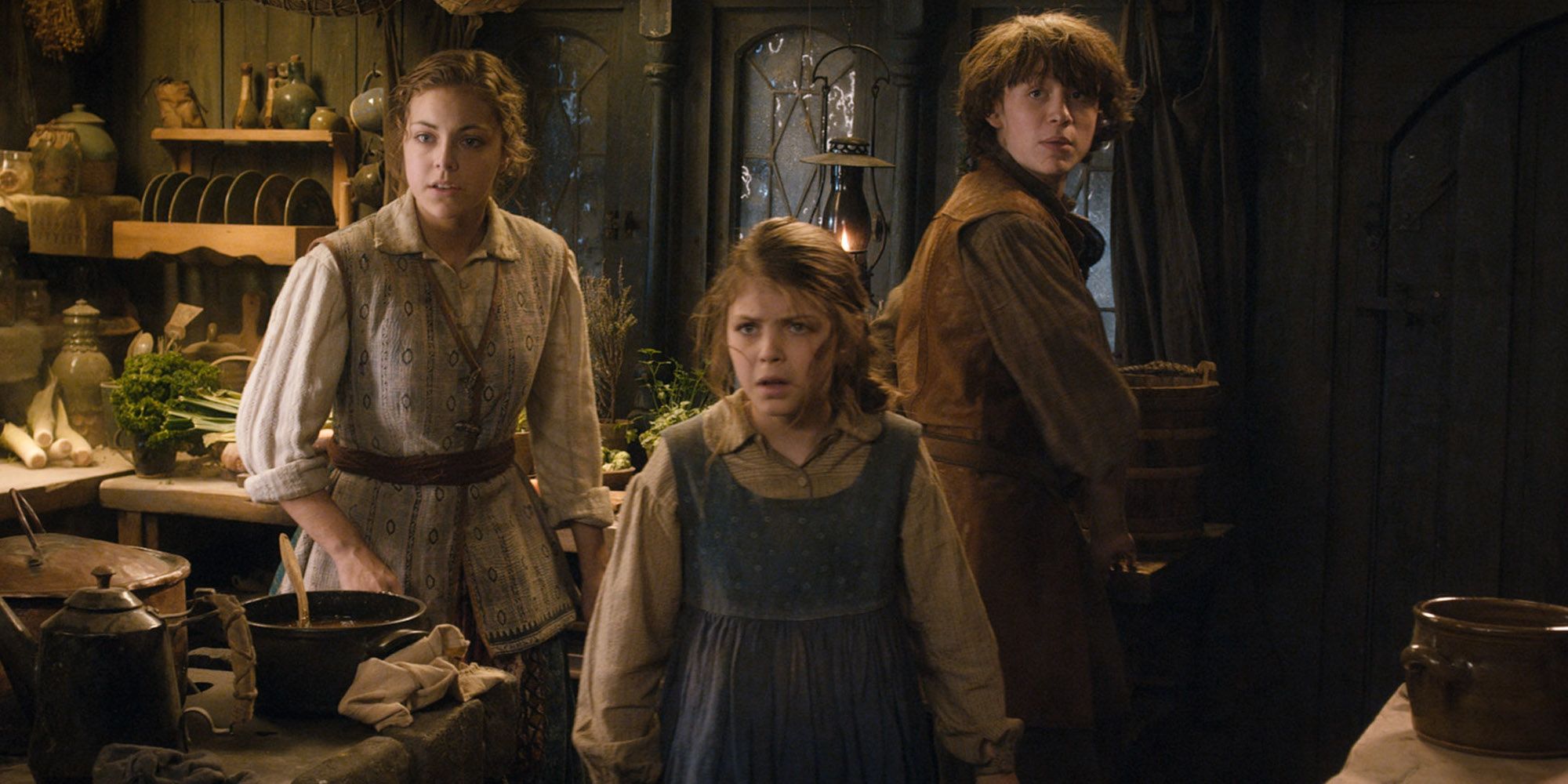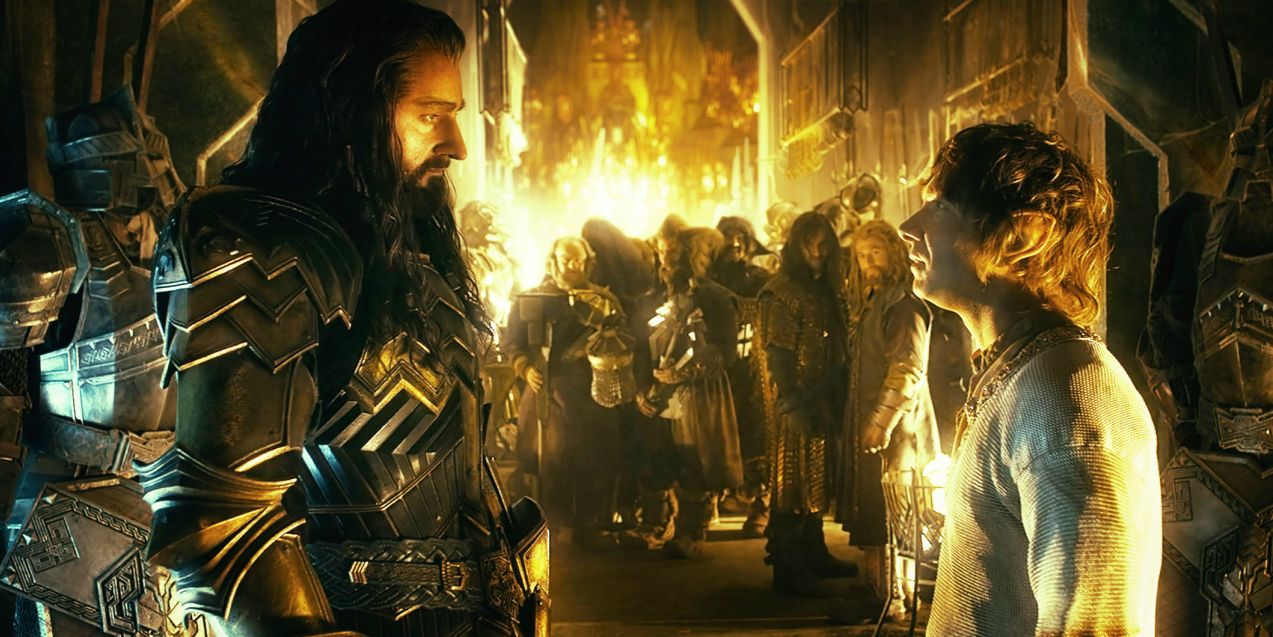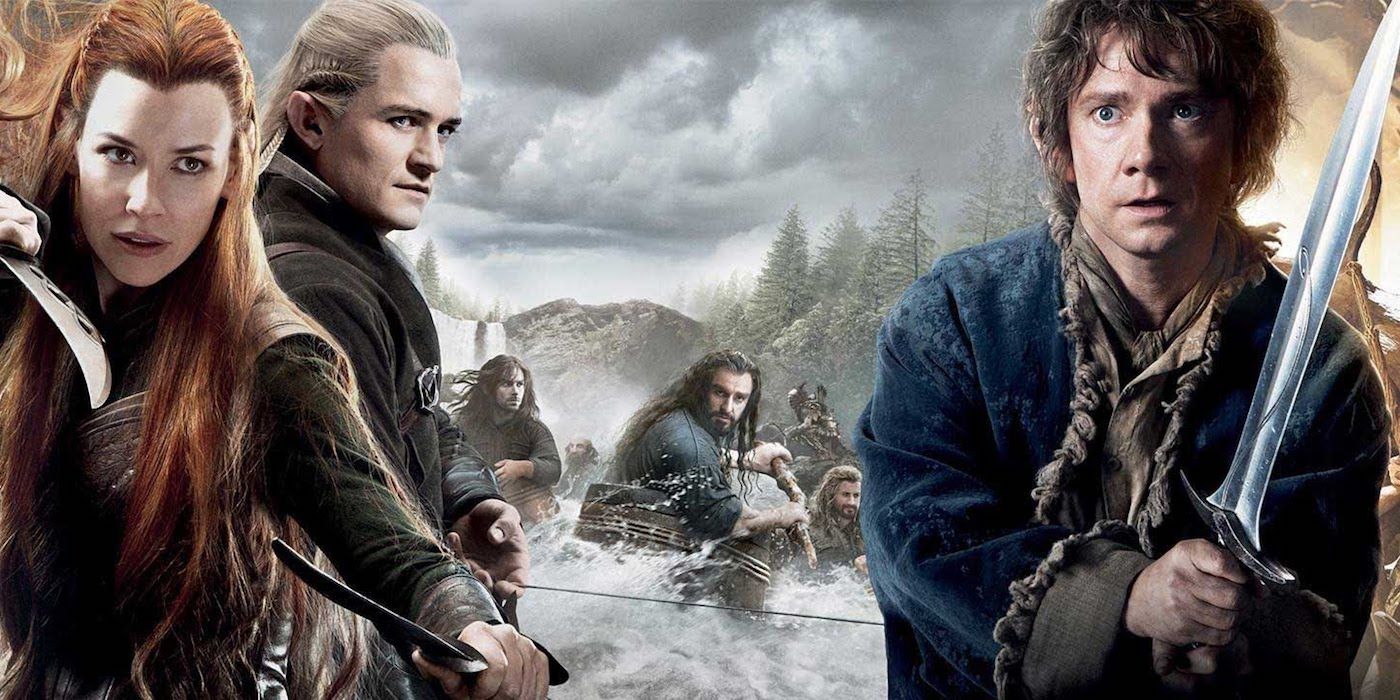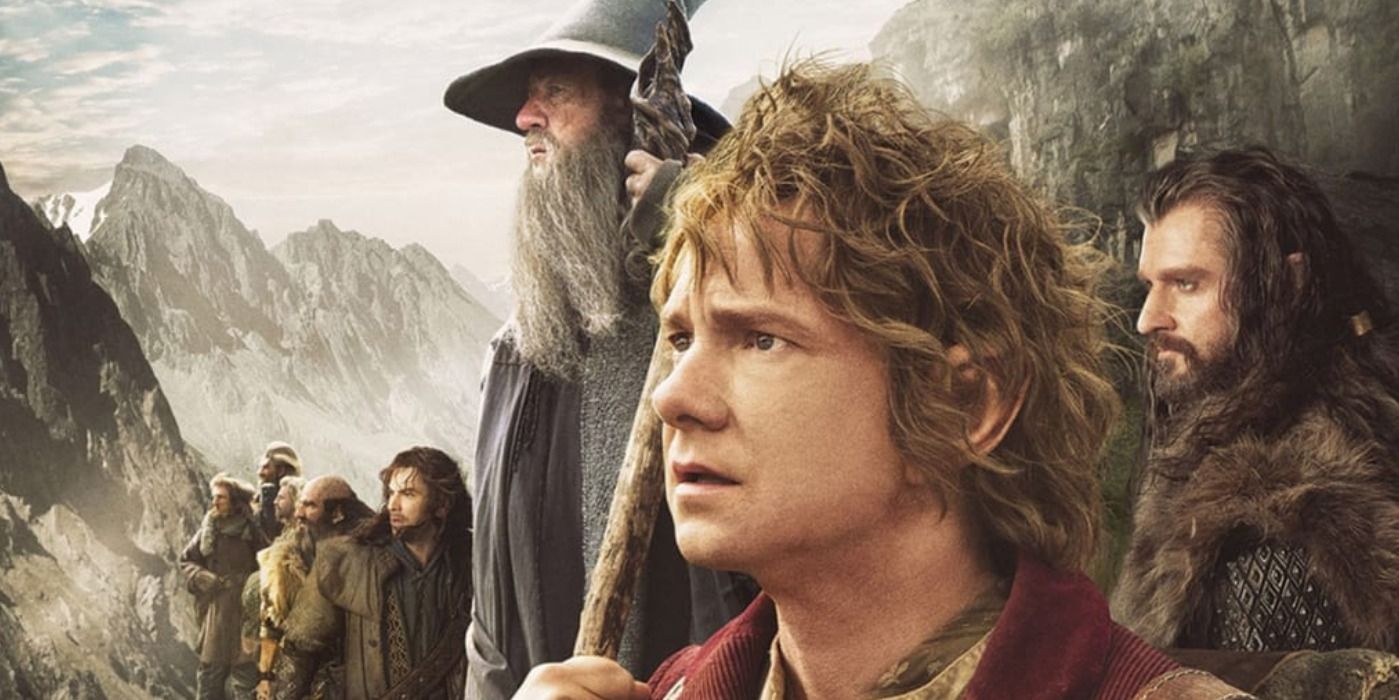The Hobbit and The Lord of the Rings are two of the most popular fantasy stories of all time. The world of Middle-Earth created by J.R. Tolkien inspired many fans for decades. The Hobbit is the simpler tale told for a younger audience, but it is a favorite for many people because of how easy and fun it is to read.
So, when the movie version was turned into a three-movie epic, fans had some mixed feelings. While there are many great things about The Hobbit book and films, there are also some things that haven’t aged well.
The films got rid of important family relationships from the books
In the books, the relationships between the dwarves are a little more central. The book is written for children, so there is a lot of comedy and buffoonery. On the other hand, it’s clear that the bonds of kinship and family are really important.
In the movies, these relationships, such as between Fili and Kili, seem to be left by the wayside in pursuit of making a grand fantasy adventure or inserting romantic storylines.
Making three movies just seemed like a money grab
If there’s one thing that fans aren’t happy about when it comes to The Hobbit movies it’s that there are three of them. There are so many things added to these movies that aren’t in the book.
While some of the additions do come from other Tolkien source material, many other things do not. Many people felt like the movies were almost a parody of the Lord of the Rings, and it just seemed like a cash cow that was being milked dry.
There are no women in the original text
Given that The Hobbit was released originally in 1937, there are obviously a lot of issues with gender roles that wouldn’t go over very well today. There are no actual characters, except Bilbo’s mother who is briefly mentioned.
This book is filled with a lot of men including an entire host of male dwarves that are hard to even tell apart at times. Women, however, clearly don’t go on adventures in this world. This definitely feels really outdated.
The main woman added to the movies was mainly used for a love triangle
Since some of the issues of gender representation can be blamed on the time period, it makes sense to look at the movies as they are a recent interpretation. While the movies did try to add more women by giving Galadriel a role and adding the character of Tauriel, the way this was handled wasn’t great.
Tauriel is basically added only to be a love interest, and she isn’t very well-written or complex. It’s unfortunate that the only added woman wasn’t really incorporated well into the story in a way that made sense.
The message of the book is lost in the movies
In the book, despite the fact that it was written for children, there are some big messages that audiences can takeaway. One of the biggest themes is about bravery and courage as Bilbo grows from being a comfort-loving Hobbit to learning to be braver. There are also many strong themes of the bonds of kinship.
With all that goes on in the movie, the story arc of Bilbo tends to get lost in everything else, and the relationship between Tauriel and Kili took too much of the limelight.
The dwarves are made to be younger and hotter
Many of the places where The Hobbit films went wrong are where they deviated from the books in order to try to appeal more to mainstream audiences.
While trying to add more diversity was a good aim, the way they went about just making some of the dwarves younger and more attractive wasn’t a good move. It would have been more impactful to show all of the dwarves as they were supposed to look. It felt like the desire to make the characters younger and sexier was a problem.
Two of the main women mentioned in the movies are dead
While the filmmakers did try to include a couple of women in the narrative in an important way, there is still a problem with how few women there are. There are really only two women, as well as Bard's two daughters who aren't adults, in these three movies that are featured: Galadriel and Tauriel.
However, there are two women who are mentioned more than once who happen to be dead. Both Bard and Thranduil have dead wives who seem to drive their stories forward, and it seems outdated to have as many dead women in a story as alive women.
There’s no LGBT+ representation even though it could be added
When interpreting a classic text like The Hobbit, fans are always going to have strong feelings. Many people wanted the films to stay completely true to the books while others were more open to changing things to make the story better.
Given the time period the book came out, there isn’t any LGBT representation. While they didn’t have to make any main characters LGBT, adding even a passing reference or background character would have been a great addition.
There really isn’t any racial diversity
One of the biggest issues with The Hobbit and The Lord of the Rings is that they are overwhelmingly full of white actors and actresses. None of the main characters in either franchise are people of color.
While they might have all been presented as white people in the books, there’s no reason that The Hobbit films couldn’t have cast more diverse actors. They had an easy opportunity to be more diverse and have better representation, and they didn’t do it.
Overall, the film is extremely white and male-centered
The main thing about the books and the movies that haven't aged well is that they aren’t diverse at all. This story is centered around white, male characters despite the fact that it takes place in a fantasy world.
Even though it’s a place filled with elves, dwarves, and dragons, the fact that it’s still so heteronormative and white is unfortunate.

